Don't wanna be here? Send us removal request.
Text
https://proofeasy.io/different-ways-of-using-digital-signatures-in-the-insurance-industry/
0 notes
Text
How ProofEasy Helps the Healthcare Sector

The healthcare industry faces significant challenges, such as verifying health records, transferring patient data securely, and preventing clinical data forgery. While blockchain technology may not resolve all issues, it can alleviate many operational pain points, especially through blockchain-secured QR code health information.
Key benefits of ProofEasy in healthcare include:
A user-friendly portal for quick document uploads.
Rapid generation of QR code patient information.
Secure verification of electronic health records, including ID and credential checks.
Promotion of secure data exchange and management via blockchain technology.
Easy scanning and sharing of QR codes through the portal or via platforms like mail and WhatsApp.
Secure enterprise file sharing using blockchain-based QR code protection.
ProofEasy helps address critical issues in the healthcare sector, promoting secure and efficient data management.
0 notes
Text
https://proofeasy.io/what-is-a-digital-certificate/

Digital certificates, hosted on blockchain, are tamper-proof, secure, and machine-verifiable. They include key components like public keys, owner and authority details, validity periods, and unique serial numbers. Adhering to W3C standards, they enhance privacy and control. Platforms like ProofEasy simplify issuing these secure, immutable certificates.
0 notes
Text
Embracing Digital Credentials: The Future of Real Estate Certification
The future of real estate certification lies in the adoption of digital credentials. As the industry embraces this technology, real estate professionals, clients, and regulatory bodies will benefit from more secure, efficient, and transparent processes such as ease to verify credential.
0 notes
Text
Trends in certifying digital health records for international travel and medical purposes
ProofEasy is one such name that utilizes one of these trending techs to offer their services. Check out their platform to learn more about their patented blockchain based security. You connect with them to learn more about certification systems or get answers for basics such as what is digital certificate.
0 notes
Text
What is a digital certificate?
A digital certificate is an electronic document that verifies credentials or course completion, much like a physical certificate. ProofEasy’s blockchain-powered digital certificates ensure secure and reliable documentation.
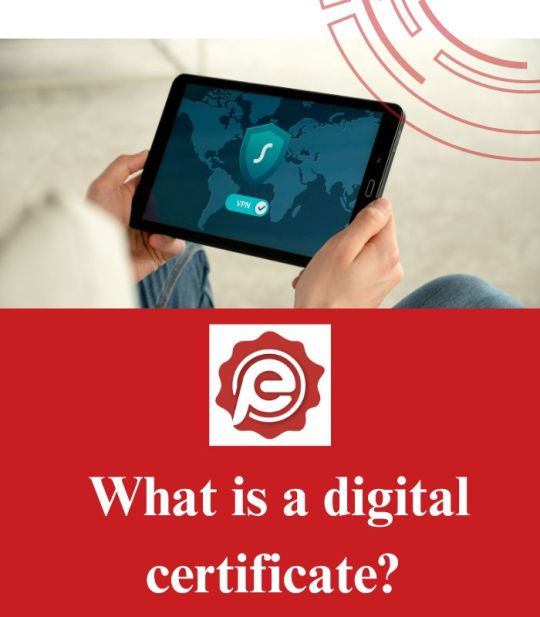
0 notes
Text
Centralized Versus Decentralized Networks: What’s Right For Your Business?
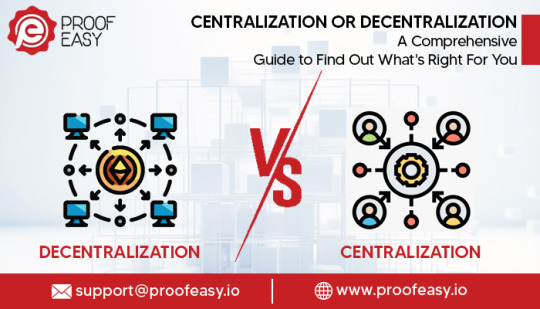
Choosing a digital network for your business is incredibly essential to boost information-sharing, enhance its employee’s productivity, and promote swift decision-making. However, digitalization isn’t this simple. Business owners need to choose between centralized and decentralized networks.
But how do you choose which network is right for you? Do you conduct a company-wide poll and pick one that has the majority votes? While this might be a fun exercise and give your employees a chance to dictate the network they'll be using day-in, day-out, you must make this decision after understanding what each technology entails, how they’re different from each other, and how they would affect your business.
Without further ado, let’s explore centralized and decentralized networks and understand how they differ.
What is a Centralized Network?
A centralized network is defined by a unified point connected to all the nodes in the system. The central network is the central authority and commands communication among the nodes.
Think of a centralized network as a business organization. Just like an organization has a central authority responsible for decision-making and conveying them to the levels, offices, or departments that fall under its purview, a centralized network is the key node that defines a network.
All information passing between the nodes takes place through the central node, which, in turn, keeps track of all the data transmitted. This makes it extremely easy to monitor the exchanges in your organization and retrieve, organize, and manage data as required.
Although this dependency on the central node has a lot of benefits, this characteristic also makes a centralized network vulnerable from a security point of view. In case a bad actor hacks the central node, they’ll be able to control all the connected nodes and access the data being transmitted among them.
What is a Decentralized Network?
A decentralized network is the exact opposite of a centralized network. To put this into perspective, no single point of control (or failure) exists in a decentralized network.
The lack of a central authority ensures the network is open and members have the rights to share content they want without fear of reprimand or censure. For example, an individual can express their views about a particular product without fearing retaliatory action from their superiors.
Another reason why decentralized networks are becoming increasingly popular is it gives users the ultimate control. Users can control how their data is used and who it’s shared with. Additionally, no single point of failure ensures that even if a network is compromised, the entire network won’t collapse. It’s also challenging for hackers to try and shut every computer on a network to steal data.
Perhaps the most relevant example of a decentralized network is blockchain. A decentralized blockchain network contains multiple nodes. There's no central authority controlling each transaction. The network is trustless and transparent, meaning the transactions are visible to everyone on the network and are verified by individual miners around the globe.
Moreover, there’s no single point of failure and the data is encrypted to keep it safe from prying eyes. Blockchain also promotes decentralized identity, allowing individuals to govern the type and amount of their PII (personally identifiable information) they share with other individuals and organizations.
A decentralized network encourages peer to peer communication, eliminating unnecessary middlemen and connecting individuals with each other around the globe.
Now that you’re clear on what a centralized and decentralized network mean, it’s time to dive into their differences.
Centralized Network vs Decentralized Network
The following points are the major difference between centralized and decentralized networks:
Decision-making Power
In a centralized network, the central node has the ultimate authority to make decisions. The authority can also enforce rules and is responsible for monitoring and managing the system. The connected nodes usually don’t have a say in it and can’t do anything about the decision and have to follow them. Examples include business and government organizations.
On the other hand, in a decentralized network, power is distributed across nodes. No single node has the power to make a decision, enforce rules, or manage the network. All related decisions are taken through a consensus mechanism wherein all the participants are given a voice. Decisions are taken based on the majority votes. Examples include Bitcoin’s Proof of Work (POW) mechanism wherein miners are responsible for validating transactions.
Security
One of the most important differences between centralized and decentralized networks is security. While both the networks are secure in their own right and employ several technologies to ensure they can’t be compromised by bad actors, their approach and vulnerability differs.
A centralized network employs multi-factor authentication (MFA) to make its network secure and less vulnerable, but its inherent structure makes it a target for hackers. Simply put, the centralized node is a bull’s eye for each hacker and if they successfully break into it, they can access all the data moving through the node.
Alternatively, a decentralized network’s success lies in its distributed structure. To elaborate, no single point of failure and a distributed network makes it challenging for hackers to exploit the network. Moreover, if they somehow manage to hack into a node or bring it down, it won’t affect the network or compromise its secrets. Another thing to note is that decentralized technologies like blockchain encrypt all stored data and require dedicated keys to decrypt the information.
Ability to Scale
It’s generally a little difficult to scale centralized networks since all transactions are made through the central node. So, it’s usually difficult to keep adding new nodes to the network or scale it at a rapid pace.
On the flip side, decentralized networks have no such issues. As the network isn’t dependent on a single node, additional nodes can be easily added to the system without compromising the network’s stability.
Dependence on Third Parties
A centralized network is dependent on a third party to facilitate and regulate communications between two end-points. However, decentralized networks have no such hang-ups. They actively eliminate third parties and promote peer-to-peer exchanges.
Level of Transparency
Centralized networks are seldom transparent. Participating nodes don’t have access to the bigger picture or all the pieces of a puzzle. The information is largely controlled by the central authority and nodes function in the system on a need-to-know basis. While this doesn't make the network transparent and puts members at a disadvantage, this model allows the central authority to control how and when information is shared with the nodes.
Contrastingly, decentralized networks are the definition of transparent. The distributed ledger technology (DLT) keeps each member node in loop and updated on the latest happenings in the network. This means that anyone with access to the network can view the stored records without taking permission from a central authority.
Which Network is Right for Your Business?
Choosing between the two networks can seem daunting but understanding both and their differences will allow you to make an informed decision. For instance, if you want to regulate the communication in your business, a centralized network is the way to go. However, if security is your number one priority, a decentralized network would fit the bill.
If you're still unsure about which way to go, how about you try them out? While you might be familiar with a centralized network and have seen it in practice in multiple areas in your life, you might not have first-hand experience with a decentralized one—unless you are a crypto-enthusiast. Enter ProofEasy. A patented blockchain and QR code technology that will secure your documents and help you generate digital certificates with elan. If you’re worried about the blockchain aspect, don’t be. The solution is incredibly user-friendly, secure, supports instant verification, and budget-friendly. Moreover, the solution offers a customizable API so businesses can integrate it with their existing systems without overhauling their IT infrastructure.
0 notes
Text
youtube
How to copy secure document verification link in ProofEasy? Explore Now!
#blockchain#blockchain technology#technology#qr code#digital certificates#digital certificate verification#digital certificates management#decentralized#digital#Youtube
0 notes
Text
What are the Components of a Digital Certificate?
A digital certificate has emerged as a formidable opponent against fake certificates. Since they’re tamper-proof, secure, and incredibly simple to issue and maintain, more and more organizations are adopting them by the day.

#blockchain#digital certificates management#digital#digital certificate verification#blockchain technology
0 notes
Text
ProofEasy provides you utmost security to your documents
With ProofEasy, ensure utmost confidentiality as only authorized users designated by you during securitization can access your secured documents.
Head over to : https://proofeasy.io/use-case/audit-industry/
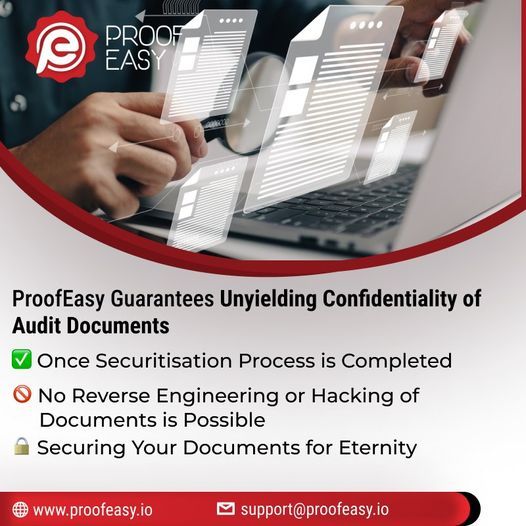
0 notes
Text
How Can You Check Your Digital Document’s Authenticity?
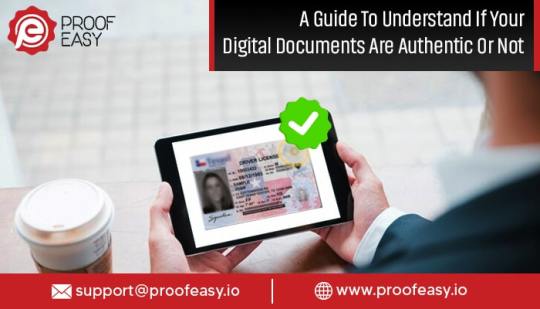
The new normal, rise of remote and hybrid work models, and widespread penetration of the Internet have ushered in the digital era of documents. As more and more businesses and organizations are moving away from paper-based documents or digitizing their existing records, it’s necessary to check if the digital document you have is authentic.
Admittedly, a digital document is eco-friendly, costs less, and doesn’t require copious amounts of real estate to store unlike their paper contemporary, but they are vulnerable to targeted attacks. This means digital documents can be hacked, forged, and altered easily by someone who has the know-how and isn’t afraid to take risks.
In this scenario, it becomes difficult for you to decide if the document you have is original or a tampered version? Worse, what if the presented document digital is fake? Fortunately, there are several methods you can employ to check the authenticity of digital certificates, aka verifiable credentials.
What is a Digital Certificate?
Before we get into the methods you can use, it’s important to understand the meaning of a digital certificate. A digital certificate is similar to a regular digital document. The key difference is this document is hosted on the blockchain. It also follows the guidelines laid down in the Verifiable Credentials Data Model 1.0 by the World Wide Web Consortium (W3C).
Based on its association with blockchain and the data model rules, the document is tamper-proof, can be verified by machines, and uses privacy-enhancing technologies, like decentralized identifiers (DIDs). This is all well and good, but how can a digital certificate prove authenticity?
4 Ways You Can Check the Authenticity of Your Digital Documents
Here are the four ways you can check the authenticity of your digital documents:
1. Verify the Document’s Digital Signature
Digital documents are signed to authorize the information presented and help build trust in the document. Think of them as regular signatures, but more secure and binding. They use popular digital signature protocols like the DSA (digital signature algorithm).
That being said, this type of signature isn’t exempt from fraud. So, how can you verify the document’s digital signature? Look for two key elements in a digital signature to verify its authenticity, including:
Pairing of private and public keys: Since the digital signature certificate is hosted on a blockchain network, it uses public and private keys for signature. Basically, the issuer uses their private key to securely sign a verifiable credential, whereas the public key is shared with the holder or public (in case a lot of people need to access the secured document). Unless the public key matches the private key, no one can decrypt the encrypted message.
Hash code: When the issuer cryptographically signs a document using their private key, a hash code (containing letters and numbers) is generated based on the document’s content. Ultimately, this code is encrypted using the signer’s private key for the development of a digital signature.
These two elements are your guide to verifying the authenticity of your document. The first step is to match the public key with the private key. If a public and private key don’t match, that’s a definite red flag.
The other option is to compare the hash code. A receiver generates a new hash code for the received document when they decode it. This generated hash code should match the hash code generated during signature. If the code isn’t exactly the same, it could be indicative of a tampered and fake document.
2. Check the document’s metadata
A document’s data can often be found in its metadata (the data about data). The metadata will offer details regarding the document’s content, origin, history, and more. The data is your map to explore the hidden paths of the document and learn all about it. You just need to know where to look and be patient while going through the data.
To illustrate, if you want to check the document’s authenticity, you might want to check how it was created and dive deep into the licenses and rights of the document. So, to discover all this information about the document, you’d want to check its administrative metadata. You might also be interested in checking the location of where the document was created. If yes, look for the document’s geospatial metadata.
But if you are more curious about the document’s creator, keywords, its title, and more, you’d get your answers by exploring the descriptive metadata. Similarly, structural metadata will cover details on the document’s structure, like pages, sequence order, chapters, and more.
Simply put, all the data about the document is already there, you just need to exercise patience and go through it with a fine-toothed comb so you don’t leave any interesting crumbs behind.
3. Authenticate the document’s hash value
A document’s hash value is akin to its digital fingerprint. Just like no two fingerprints are the same, no two hash values are the same (though there might be some exceptions). This is mostly because a hash value, a fixed character string of letters and numbers, is generated solely based on the document’s contents.
When secured on the blockchain, the hash code is submitted on the network, too. This makes the hash value immortal. Here’s the kicker: Whenever someone makes a change to the document (think a change as miniscule as a grammar Nazi removing or adding a comma), its hash value changes inexplicably.
This property makes the hash value a game-changer in the world of document security. For instance, when you send a document to a receiver, you just need to provide the original hash value to the receiver. The recipient will then recalculate the document’s hash to ensure it matches the issuer’s. If it doesn’t it’s a clear indicator of a tampered document.
Most blockchain-based document security platforms use the SHA-256 (secure hash algorithm-256) to secure and tamper-proof documents.
4. Examine the document’s digital trail
A digital trail is akin to a document’s history. Think of this exercise as checking a Google Doc’s history. So, basically examining when the document was created and by who. Further, when and how it was edited and who contributed to the edits. This adds another layer of security to the document.
However, this feature isn’t available for all digital documents. This is mostly provided by blockchain security solutions, like ProofEasy, that want to build a digital fortress around all documents and ensure you know exactly what’s happening with your document.
Keeping track of the digital trail will help you stay on track and check if the document has been altered or tampered. It’s important to note that an original document stored on the blockchain can never be altered because whenever you edit it (even if you’re the issuer), a new hash value is created for the document.
So, you’ll always be in the know when a document is altered or tampered with. An absence of a digital trail will also help you identify fake documents and keep your business secure against fraudsters.
Generate Authentic Documents on ProofEasy
ProofEasy is a blockchain and QR code solution that helps secure existing documents and securely issue new documents. The best part, though? You’ll always be in charge of your documents. All you have to do is go to the unified dashboard to keep track of all your documents and manage them.
The cherry on top is the budget-friendly pricing of the solution. But you don’t have to commit to anything until you’re 100% ready. So, why don’t you take ProofEasy for a spin? Simply sign up on the platform to start your free trial. No credit card details are required.
0 notes
Text
Dive into the World of Digital Certificates
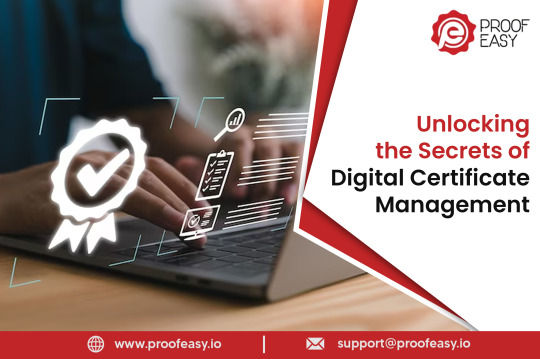
#digital#digital certificates#digital certificates management#digital documents#technology#management
0 notes
Text
Why is Traceability in Food Important, and How Can It Be Achieved?

0 notes
Text
ProofEasy: Setup verification in your Website
Explore the power of blockchain verification – a secure and transparent method ensuring the integrity of digital transactions. Discover how this decentralized technology authenticates information, fosters trust, and revolutionizes various industries. Dive into the world of tamper-proof records and traceability, where blockchain verification is reshaping the future of secure and reliable data exchange.
#blockchain#blockchain technology#tamper-proof#verification#blockchain verification#technology#services
0 notes
Text
Guardians of Your Digital Identity: How DIDs & Verifiable Credentials Empower Blockchain Identity Management?

The world we live in right now is becoming increasingly digital. Online interactions have become second nature and with that the importance of safeguarding our digital identities cannot be overstated.
For years, we've relied on centralized identity systems, but their flaws have loomed large. Lack of means to verify credential, security vulnerabilities, etc. the list of drawbacks is immense.
However, a new dawn is breaking in the world of digital trust, and it's driven by Blockchain Identity Management through Decentralized Identifiers (DIDs) and Verifiable Credentials.
Buckle up as we embark on an exciting journey into the future of online identity. In this blog, we uncover how these two elements - DIDs and Verifiable Credentials create trust in blockchain identity management systems.
The Pitfalls of Centralized Identity Systems
Centralized identity systems, such as usernames and passwords, have been the workhorses of the digital world for decades. But they come with a baggage of issues:
Security Vulnerabilities: Centralized databases are like shiny jewels for hackers. Breaches can expose enormous volumes of personal data, leading to identity theft, financial fraud, and all kinds of digital shenanigans.
Lack of Control: Once you share your personal data with organizations, you often lose control over it. Your data is collected, processed, and sometimes monetized without your consent or benefit. This loss of control raises legitimate concerns about data privacy and misuse.
Privacy Concerns: Traditional identity systems collect more data than they need for verification. This data overreach gives rise to privacy concerns, as users may be sharing more personal information than is necessary. Outdated credential verification services are simply not viable.
Inefficiency: Multiple usernames, passwords, and registration forms are a bane for users. Managing these can be cumbersome and frustrating, leading to a less-than-stellar user experience. This inefficiency often results in weak passwords, password reuse, and overall security vulnerabilities.
Welcome to Blockchain Identity Management
Blockchain technology, the disruptive force behind cryptocurrencies, is now stepping into the realm of identity management. It offers what centralized systems can't: enhanced security, control, and privacy.
Decentralized Identifiers (DIDs)
DIDs are the cornerstone of self-sovereign identity. A DID is a unique identifier associated with a subject - an individual, an organization, or a device.
Unlike centralized identifiers issued by a single entity, DIDs are decentralized. They empower users to create, control, and prove their identity without relying on a third party.
Privacy at Your Fingertips: DIDs allow users to share only the necessary information, preserving their privacy. Users can reveal data on a need-to-know basis, keeping their personal information confidential.
Unyielding Security: Blockchain ensures that DIDs are immutable and tamper-resistant. Once a DID is created, it's etched in digital stone, immune to alterations or deletions, thereby enhancing security and thwarting unauthorized access.
Interoperability Magic: DIDs are designed to work across different platforms and services, forging a universal identity solution. This means that identity verification can be consistent and straightforward across a myriad of online platforms.
Verifiable Credentials
Verifiable Credentials are digital attestations that can be issued and verified cryptographically. They are the dynamic duo of DIDs, enabling secure sharing of identity-related information like age, qualifications, and financial history.
Selective Disclosure Superpower: With Verifiable Credentials, users can selectively disclose their information, sharing only what's necessary for the transaction at hand. It's like a digital vault where you can pick and choose what to share, ensuring a granular approach to privacy.
Trust and Authenticity Arsenal: Credentials issued on a blockchain are bulletproof when it comes to authenticity. The cryptographic verification process guarantees that credentials are genuine, making it extremely difficult for malicious actors to present counterfeit information.
Frictionless User Experience: This approach streamlines identity verification processes, giving users a smoother, more efficient experience. No more remembering dozens of usernames and passwords, just a simplified and hassle-free digital existence.
Meet the Pioneers: ProofEasy
In the dynamic field of blockchain identity management, one company stands out as a trailblazer. ProofEasy has emerged as a pioneer in providing digital identity solutions powered by their patented blockchain technology.
Their innovative approach hinges on DIDs and Verifiable Credentials to create a secure, user-centric identity management system. ProofEasy puts users firmly in control of their digital identities, minimizing the risk of data breaches, and delivering a seamless, privacy-focused online experience.
Here are some compelling reasons why ProofEasy is making waves:
User-Friendly Finesse: ProofEasy empowers users to take control of their identities without being complicated. Individuals can share their information on their terms, ensuring that their personal data remains their domain.
Patented Blockchain Brilliance: Their proprietary blockchain technology guarantees security and immutability of digital identities. Your data, once recorded on their blockchain, is set in digital concrete, providing tamper proof security.
Privacy in Their DNA: ProofEasy is committed to user privacy. They've woven privacy protection into the very fabric of their identity solutions, ensuring that users' sensitive information remains safeguarded and doesn't fall into the wrong hands.
Efficiency and Savings: The streamlined identity verification processes offered by ProofEasy benefit both users and organizations. Reduced fraud and operational costs make for a win-win situation, improving security and efficiency across the board.
Bottom Line
As we usher in this new era of digital trust, blockchain identity management, powered by DIDs and Verifiable Credentials, is poised to redefine how we establish and manage our online identities.
ProofEasy's pioneering efforts shine a light on a future where individuals have more control, more privacy, and greater security over their digital identities, making the online world a safer and more user-friendly place.
If you are interested to know more about secure digital identity solutions then be sure to meet ProofEasy at the Identity Week Asia 2023. You can find them at Suntech Convention Centre, Singapore from 7-8 November 2023.
0 notes
Text
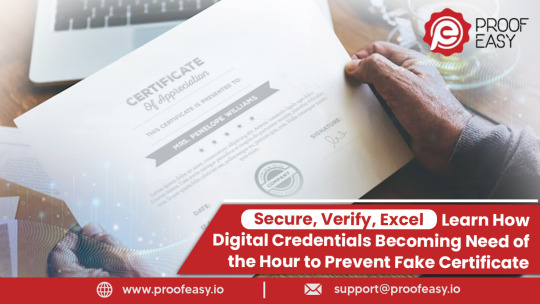
In a world where technology weaves its intricate web into the fabric of our lives, our trusted paper certificates and diplomas are getting a 21st-century makeover. These digital badges, known as digital credentials, are not merely an upgrade but the frontline defense against a persistent and age-old menace – counterfeit certificates.
Still don’t know what is digital certificate and how it works.
0 notes
Text
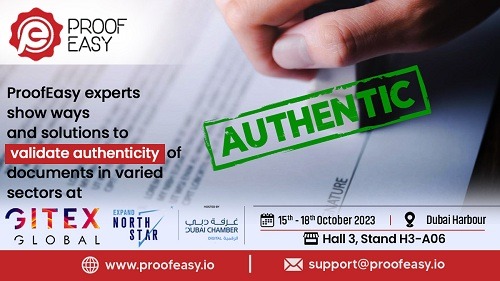
We’ve journeyed through the importance of document verification and the marvels ProofEasy has conjured to revolutionize it, there’s one more stop on our itinerary – GITEX Global 2023.
0 notes